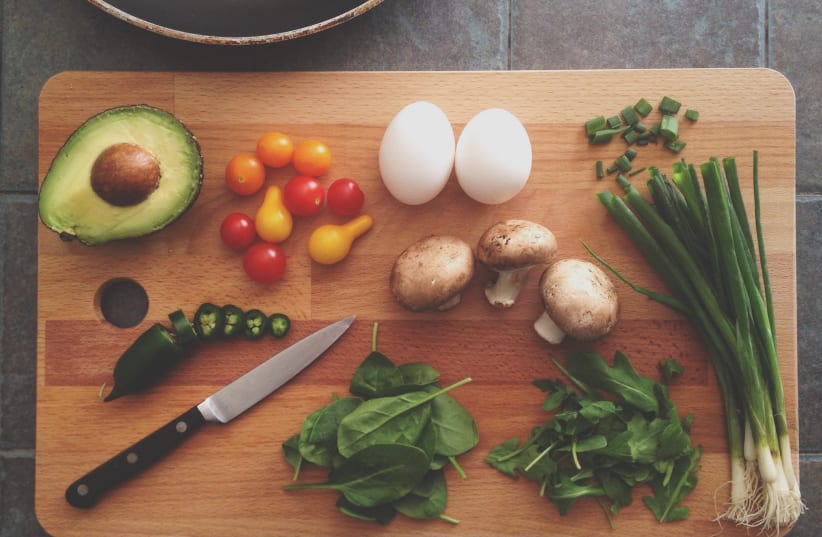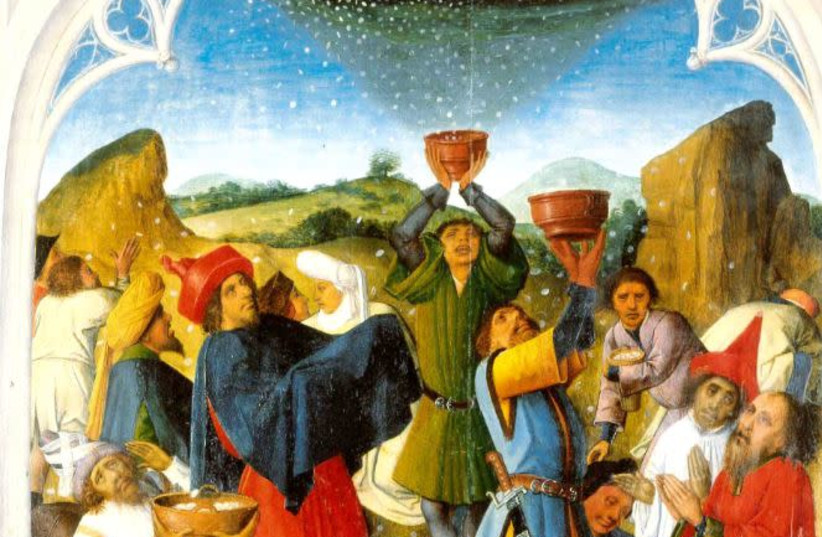In this week’s parasha, Moses states, “This is what the Lord has commanded: ‘Everyone is to gather as much as they need to eat. Take an omer [measurement] for each person you have in your tent’” (Ex. 16:16).
What did the people gather? Manna. As we are told: “When the dew was gone, thin flakes like frost on the ground appeared on the desert floor. When the Israelites saw it, they said to each other, ‘Man hu/What is it?’ For they did not know what it was.... The people of Israel called it manna. It was white like coriander seed and tasted like wafers made with honey” (Ex. 16:14-15, 31).
The midrash elaborates on its taste:
“Rabbi Jose ben Hanina says: ...the manna descended with a taste varying according to the needs of individual Israelites. The young, eating it as bread... the old, as wafers made with honey... to the babes, it tasted like the milk from their mothers’ breasts... to the sick, it was like fine flour mingled with honey” (Exodus Rabbah 5:9).
“Rabbi Jose ben Hanina says: ...the manna descended with a taste varying according to the needs of individual Israelites. The young, eating it as bread... the old, as wafers made with honey... to the babes, it tasted like the milk from their mothers’ breasts... to the sick, it was like fine flour mingled with honey”
Exodus Rabbah 5:9
What was manna?
To this day, we do not know exactly what manna was – this miraculous food that fed the Israelites on their 40-year trek through the desert. There is much speculation.
Vered Guttman considers: “The description of manna in the Bible matches what [Prof. of Botany Avinoam] Danin found in the Sinai Desert. He soon discovered that the white drops on the [Rimth/Haloxylon salicornicum] shrub’s stems were the digestive byproduct of insects that feed on the plant’s sap, known as honeydew. The secretion, formed at night, is loaded with sugar. The sweet liquid hardens to the form of white granules and is still collected from spring to early fall in many places in the Middle East today” (Moment, Winter 2019).
WHILE ALL this is of interest, we can glean important lessons from the instructions about collecting the manna. Moses told the people to “gather as much as they need to eat.” At face value, that should be simple. We all know how much we should eat.
On the other hand, do we? And if we do, do we eat accordingly? Do we eat a balanced diet and the correct portion size? In addition, manna lying all over the place is like an all-you-can-eat buffet: The limitless options before us can make it hard to control what we take. So Moses advised us to take only what we need.
The result of that guidance?
“The Israelites did as they were told; some gathered much, some little. And when they measured it by the omer, the one who gathered much did not have too much, and the one who gathered little did not have too little. Everyone had gathered just as much as they needed” (Ex. 16:17-18).
“The Israelites did as they were told; some gathered much, some little. And when they measured it by the omer, the one who gathered much did not have too much, and the one who gathered little did not have too little. Everyone had gathered just as much as they needed”
Exodus 16:17-18
There are a number of ways to read this passage. Some gathered more because they needed more manna, since their tent had a larger number of dwellers, while others gathered less because they had fewer people in their tents. We can also interpret this passage as meaning that some gathered more than they needed, and others gathered less than they needed, but once they examined what they had, they discovered it was what they were supposed to have gathered – a miracle, according to Rashi (Ex. 16:17).
Distilling further, Rabbi Ellie Munk draws insight from Maimonides’s Guide of the Perplexed (3:12), as Munk writes:
“Rambam observes that in the ordinary course of life there is no real difference between those who have superfluous wealth and those who do not. A person whose garments are embroidered with gold has not obtained control over anything that could be an essential addition to his personality, but has only obtained something illusory or deceptive. And he who lacks these extra things is not of lesser stature. This is the lesson of the manna” (Munk, The Call of the Torah, Exodus (16:18), p. 210).
Munk is teaching the importance of knowing the difference between the essential and the superfluous. That food – in this case, manna – is the tool to teach this lesson should not be lost. Nourishment is a prerequisite for life and with it our strong basic drive to obtain food. If we can control our food consumption, on some level we can control our lives. This is one of the lessons of the fast of Yom Kippur. As we take stock we refrain from eating, which is life-affirming and life-essential: to remind ourselves that if we have discipline over such an indispensable drive for life, we can also show restraint in other aspects of our lives.
Munk and the Rambam are talking about not only food but also the material and the spiritual – the multidimensionality of life, the many layers that simultaneously exist. Related to the material, Pope Benedict XVI wrote, and Pope Francis I quotes him, “Purchasing is always a moral – and not simply economic – act” (Pope Francis I, Laudato si’, par. 206).
Woven through this discourse about manna is the realization that such a simple substance is more than solely about physical sustenance – it points to the material/economic and spiritual aspects of our lives. When Moses quoted God, saying, “Everyone is to gather as much as they need” (Ex. 16:16), its echo can be heard in the socialist phrase “From each according to his ability, to each according to his needs.” The midrash quoted above, which says the taste of manna varied according to everyone’s distinctive needs and imagination, reflects that similar socialist outlook which recognizes the importance of singular diversity within the collective whole.
Rabbi Yaakov Culi (Me’am Loez) on Exodus 16:16 points out that the verse “contains the entire Hebrew alphabet,” so the gathering of manna can also be understood as creating time for the study and living of Torah in our day-to-day lives – our spiritual nourishment. ■
The writer, a Reconstructionist rabbi, is rabbi emeritus of the Israel Congregation in Manchester Center, Vermont. He teaches at the Arava Institute for Environmental Studies on Kibbutz Ketura and at Bennington College.

